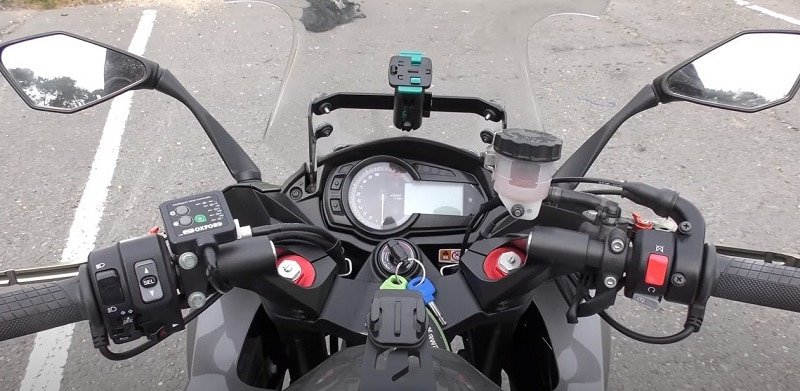Motorcycle riding seems thrilling to most of us, there is an element of danger and rebelliousness to bikes, but the thought of getting started can be daunting. However, once you learn the basics, your confidence will increase, and you will be more than keen to get riding.
Learning to ride a motorcycle isn’t that hard. most new learners take between two to eight weeks to get riding with daily practice. How long it takes to learn to ride depends on their skills and their bike.
Many aspects of learning to ride a motorcycle are pretty straightforward. However, certain aspects generally take longer to grasp.
You may not realize how your current skillsets can help you approach a new motorcycle with confidence and ease.
This article will examine how you can learn to ride a motorcycle safely and what facets of the learning process take longer to focus on getting through them.
How Difficult Is It To Learn To Ride A Motorcycle?
Learning to ride a motorcycle isn’t as complicated as most people think. Certain skillsets will help you to progress much faster.
You may not realize, but if you have any of the following skills, you have a better chance of getting to grips with a bike sooner than someone who doesn’t:
- Ability to cycle
- Drive a manual car
- Know the rules of the road
Each of the above techniques makes learning to ride a motorbike easier, but even if you don’t have experience in any of the above, you can still learn to ride a motorcycle; it might take a bit longer.
After all, you must learn to adapt the bike’s weight, maneuverable ease, and controls.
While there is no such thing as a bike for beginners, there are some excellent options for first-time riders.
A typical 500cc road motorcycle or a 250cc dual-purpose motorcycle is an ideal bike on which to learn.
The Honda Rebel comes highly recommended as an ideal machine for beginners, and its seat height is perfect for anybody.
There are different facets to riding a motorbike, and many of them aren’t hard to learn.
Let’s look at these different facets categorized as the easiest things to learn and the hardest things to learn:
The Easiest Things To Learn
- BALANCING A MOTORBIKE – If you can balance a bicycle, you can balance a motorcycle. The main difference between the two is that a motorbike weighs more, which makes balancing the bike at high speeds more difficult, while it’s easier to balance a motorcycle at low speeds than a bicycle. If you have never cycled before, you should start there before you get on a motorcycle, as you must learn how to balance on two wheels to ride.
- KNOWING THE RULES OF THE ROAD – If you are licensed for any other vehicle, you already know the rules of the road. This will help you concentrate better on the motorcycle’s controls and feel more at ease.
- USING A TURN-THROTTLE – Motorbikes and scooters are the only vehicles that use turn throttles. However, as a new rider, you must learn how to apply throttle at the appropriate time together with a clutch as you would on a manual car.
- BRAKING – This is one of the easiest aspects of riding a motorcycle because the brakes are similar to those on bicycles. The front brake on a motorbike is on the right handlebar as with a bicycle. However, the rear brake functions by a pedal just in front of the right handlebar as with a bicycle. However, the rear brake functions by a pedal just in front of the right footpeg, rather than on the left handlebar.
The Hardest Things To Learn
- HOW TO COUNTERSTEER – Countersteer is how motorcycles steer right and left by turning the bike’s handlebar in the opposite way of where you intend to go. If you can already turn on a bicycle, you already have the necessary skill as they use countersteer.
- SHIFTING GEARS – Many bikes have a manual gearbox that you operate with the left foot. Shifting gears requires operating the clutch and throttle using your hands while operating the gears with your foot. If you drive a manual car, this will help you better understand how you shift gears on a motorcycle.
- USING A CLUTCH – This mechanical device disengages the power transmission from the drive that turns the wheel. The clutch on a motorcycle is different from a clutch pedal on a car. However, the ability to engage and disengage this device at the appropriate time is the same.
Can You Learn By Yourself To Ride A Motorcycle?

Teaching yourself to ride a motorcycle is doable; however, you may be expected by law to complete and pass a training course, depending on where you live.
Even if you are not required to pass a course by law, you should take a motorcycling course to benefit from the expertise of a teacher or mentor.
Teaching yourself to ride a motorbike is not something new. It’s how people learned in the past, as there was no alternative.
Many people today learn to ride a motorcycle alone, and it can be done correctly. Consider the right way to teach yourself to ride a bike:
1. GET INSURED AND LICENSED
Bring your motorcycle home in a trailer. Make sure you get a learner’s permit before you begin riding public highways.
2. FIND THE RIGHT BIKE
It would help you to get a beginner-friendly bike. Typically, smaller bikes with lower cc are more forgiving of novice bikers.
3. GET THE RIGHT GEAR
You must wear the right motorcycle gear at all times, especially when you are first starting out, as there is a higher chance of accidents and injuries.
4. GET LOTS OF PRACTICE
It helps to get lots of practice, so start in quiet neighborhoods, empty parking lots, and secluded roads. Start slow to get more aquatinted with how the bike behaves.
5. GRADUALLY IMPROVE YOUR ABILITY
As your confidence increases on the bike, begin going around where you live but avoid riding on main roads or at peak times.
Take your time and build up your riding routes. The best time to practice with your motorcycle is between 2 am to 5 am as the parking lots and roads are usually empty.
With that said, it may not be legal to ride at nighttime with a license, so inquire about your local regulations.
6. ENROL IN A MOTORCYCLE TRAINING COURSE
You may have mastered learning to ride a motorbike by yourself, but you should still consider taking a course. A course can help you increase your skills and develop good habits and practices.
Many motorcyclists highly recommend the MSF course to acquire the necessary knowledge to ride a motorcycle as you learn in a safe and controlled environment.
Occasionally, there is a waiting list for the course, but if you’re lucky, you might be able to get in if there’s a cancellation. Or you could just wait for the next one.
Bear in mind, these training courses are worth the wait. Statistically, riders who take a motorcycle training course are less likely to have accidents.
A Motorcycle training course will increase your learning, and there is so much to learn:
- The controls
- Clutch control
- Safety handing
- Steering at different speeds
- Correct acceleration
- Push steering
- Situational awareness
- Emergency braking and swerving
- Turning techniques
- Front and rear braking
- Maintenance, care, and inspection of your bike
- Discerning good and bad motorcycling habits
Learning To Ride A Motorcycle VS Learning To Drive A Car
Learning to ride a motorcycle is harder than learning to drive a car from a dexterity viewpoint.
More skill is required for motorcycling; when you stop a car, it remains upright.
However, when you stop a motorcycle, you need to put at least one foot down on the ground for it to stay upright.
You have to balance a motorcycle, whereas you don’t balance a car; that can take time to master. Aside from that, there are many other difficulties with a bike that you don’t have with a car:
- You don’t have as much traction, especially when you make turns.
- The left-hand clutch must correspond with the right-hand brake, and you must coordinate throttle with the right foot brake and the left foot shifter.
- You must put your foot down to stop.
Final Thoughts
Learning to ride a motorcycle might be more challenging than learning to drive a car, but not that much harder.
Anybody can learn, it doesn’t require too much skill, and many motorcycling facets are easy to master.
Of course, more coordination is involved in learning to motorcycle, but if you can already drive or cycle, that will help you get riding sooner.
You should strongly think of doing a motorcycling course, and this will help you become a skilled rider; while helping you develop good habits, so it’s well worth doing.
Related Posts
- 4 Things To Wear To Stay Warm On Your Motorcycle In Winter
 Most of us here ride to work every day all year round, and we have lots of personal experience when it comes to taming the elements.
Most of us here ride to work every day all year round, and we have lots of personal experience when it comes to taming the elements. - How To Clean Your Motorcycle In 5 Easy Steps
 We all love a clean and shiny motorcycle but knowing which cleaning products to buy can sometimes be a little daunting, and so too can be the method to clean your motorcycle.
We all love a clean and shiny motorcycle but knowing which cleaning products to buy can sometimes be a little daunting, and so too can be the method to clean your motorcycle. - How Does A Manual Transmission Work On A Motorcycle
 For most people, their motorcycle transmission is one of the most mysterious parts of their bike. How does it work, and why do we shift down into first, but then
For most people, their motorcycle transmission is one of the most mysterious parts of their bike. How does it work, and why do we shift down into first, but then - How Sprockets Affect Speed on Motorcycles And Why
 It doesn’t matter if you’re a racer; if you’re just into trails riding your dual-sport, your bike can be geared differently to your performance needs. Not only on a dirt
It doesn’t matter if you’re a racer; if you’re just into trails riding your dual-sport, your bike can be geared differently to your performance needs. Not only on a dirt - 3 Reasons Why Wheelies Are Bad For Your Motorcycle
 Wheelies are super fun, and we all know that wheelies are one of the purest forms of joy known to humanity, but they can be dangerous. Wheelies are bad for
Wheelies are super fun, and we all know that wheelies are one of the purest forms of joy known to humanity, but they can be dangerous. Wheelies are bad for


